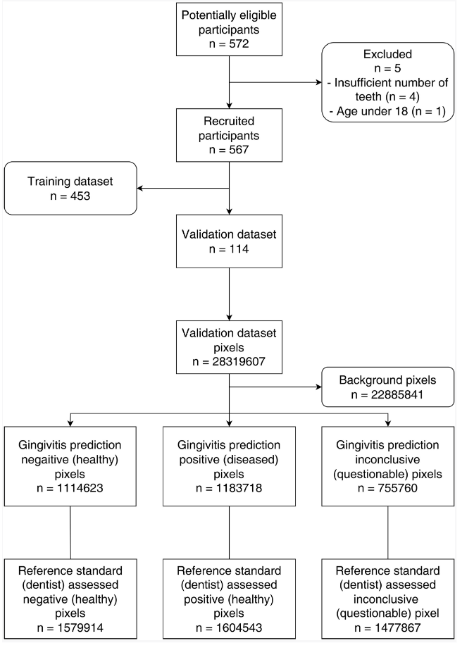Artificial Intelligence Successfully Passes Gum Inflammation Early Detection Tests
It’s a Solution for Patients Who Dislike or Cannot Regularly Visit the Dentist
Introduction
In a groundbreaking study led by researchers at the Faculty of Dentistry of the University of Hong Kong (HKU), in collaboration with multiple international institutions, the use of artificial intelligence (AI) in detecting gum inflammation, known as gingivitis, from intraoral photographs has been successfully demonstrated. This cutting-edge technology has the potential to revolutionize early detection and prevention of oral and systemic diseases linked to gum inflammation, such as tooth loss, cardiovascular diseases, and diabetes.
The Power of AI in Detecting Gum Inflammation
The study, published in the International Dental Journal, showcases how AI algorithms can analyze intraoral photographs of patients with an astounding accuracy of over 90%, comparable to a dental exam. The AI can detect signs of inflammation, including redness, swelling, and bleeding along the gum margin, matching the visual examination of a dentist. This innovative technology paves the way for population-wide monitoring of gum health, enabling more personalized dental care.
What AI Can Do in Gum Inflammation Detection
One of the key findings of the research is the significant impact on the early detection and management of gum disease. Many patients often neglect regular dental check-ups, seeking treatment only when their teeth reach an advanced stage of dental diseases, leading to inevitable tooth loss and expensive rehabilitative treatments. The study’s leading HKU researcher, Dr. Walter Yu-Hang Lam, highlights that AI can serve as a valuable screening tool for detecting and diagnosing gum disease, allowing for earlier intervention and improved health outcomes for the population.
Diagram: AI Detection of Gum Inflammation
AI in Dentistry: A Growing Trend
The use of AI in dentistry has been gaining momentum in recent years, with researchers exploring various applications of the technology. From detecting cavities to predicting treatment outcomes and designing artificial teeth, AI has proven its potential in transforming dental care. The use of AI in gum inflammation detection marks a promising development that could revolutionize how gum disease is detected, treated, and even prevented.
Leveraging AI and Intraoral Photographs
Dr. Reinhard Chun-Wang Chau, an HKU co-investigator of the team, emphasizes the benefits of utilizing intraoral photographs in conjunction with AI technology. Patients can use these photographs to address areas they might have missed during their oral hygiene routine, allowing them to seek timely dental assistance. This combination of AI and intraoral photographs empowers individuals to take proactive measures to maintain their oral health.
Interdisciplinary Research and Knowledge Exchange
The collaborative nature of this study underscores the power of interdisciplinary research and knowledge exchange. By bringing together experts from different fields and regions, the researchers were able to develop an AI model capable of accurately detecting gum inflammation. Such breakthroughs have far-reaching implications for public health and wellbeing.
Future Endeavors and Community Services
For the next stage of the project, Dr. Lam plans to extend the AI system for community services, making the technology more accessible to elderly and underserved communities. The aim is to improve oral health outcomes and reduce health disparities. By deploying AI-powered tools in local dental clinics and outreach programs, more people can benefit from early detection and appropriate interventions.
Conclusion
The groundbreaking study conducted by the HKU Faculty of Dentistry and its international partners has showcased the tremendous potential of AI in revolutionizing oral health care. The ability to detect gum inflammation accurately through AI algorithms and intraoral photographs offers a new dimension to preventive dentistry. By leveraging technology and interdisciplinary collaboration, we can now take significant strides towards improving population-wide oral health, leading to better overall wellbeing and a healthier society.
SOURCES
- Science Daily – AI for detection of gum information; 2023 June 28;
- International Dental Journal – Accuracy of Artificial Intelligence-Based Phonographic Detection of Gingivitis 2023 April 26.













